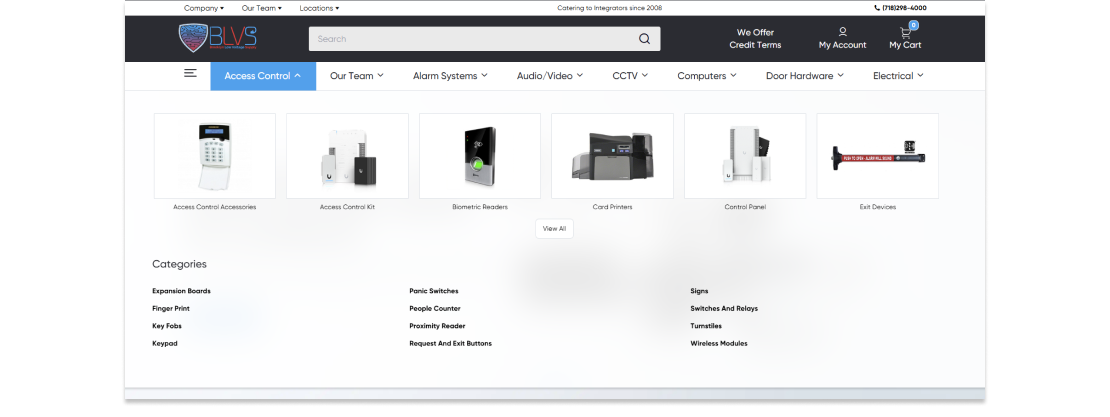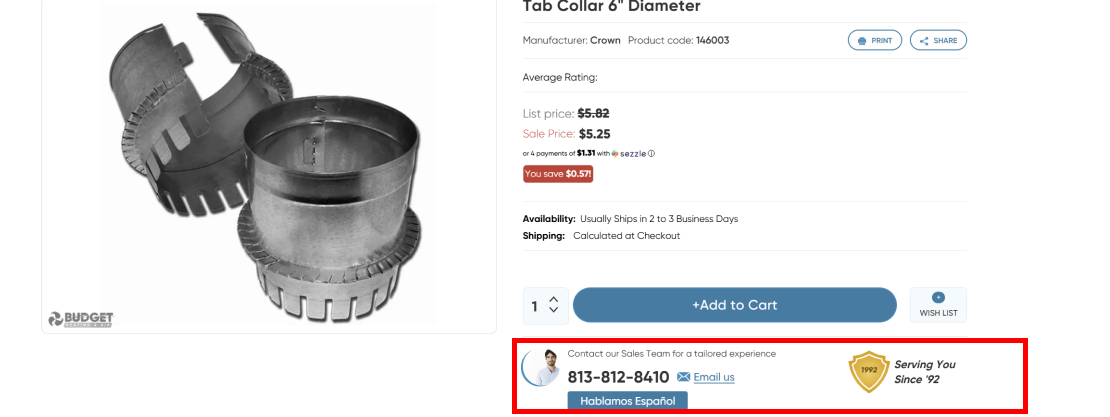
Customer experience on a website is simple. It’s how people feel when they use it. Do they find what they’re looking for quickly, or do they get lost clicking around? Do the pages load fast, or are they staring at a spinning wheel? Do they trust your site enough to hit “buy,” or do they close the tab and move on?
Good customer experience feels easy. A bad one feels like work. When a site is clear, fast, and trustworthy, people stick around. They explore. They buy. When it’s clunky or confusing, they leave. And once they leave, you rarely get them back.
Think about the last time you ordered food online. If the menu was clear, the checkout was smooth, and your confirmation came right away, you felt good about it. But if the site lagged, made you create an account, or hid delivery fees until the last step, you probably swore you’d never order from them again. That’s customer experience in action.
For small businesses, the experience customers or potential customers have on your site often determines whether they convert or click away. Google pays attention as well. Websites that people enjoy using tend to rank higher because search engines want to direct users to places where they’ll have a positive experience.
How Poor Customer Experience Costs Small Businesses
Every lost click is a lost chance at revenue. When a website frustrates people, they do not wait around. They leave. For a small business, that hurts more than it does for a giant retailer. Amazon can afford to lose a shopper or two. A local clothing boutique or HVAC company cannot.
Lost Revenue and Wasted Marketing
A slow website isn’t just frustrating, it’s costly. Over half of mobile users (53%) leave if a page takes longer than 3 seconds to load according to a study done by Google. That means the money you spent on ads, social media, or SEO is wasted because the page could not keep up. Even if they stay, clunky navigation or hidden fees at checkout push people away.
The Ripple Effect
A bad experience can cost you one sale, and it can also damage your brand’s reputation. Customers remember the frustration and tell others about it. In a world where reviews and word of mouth matter, one bad moment can cost you dozens of future sales.
Weakening Your Marketing Efforts
Poor customer experience undermines every marketing effort. You can run great ads, rank high on Google, and attract plenty of traffic. But if visitors bounce the moment they land, none of it matters.
Actionable Ways Small Business Owners Can Improve Customer Experience
Make Navigation Simple and Intuitive
 Brooklyn Low Voltage Supply’s Navigation
Brooklyn Low Voltage Supply’s Navigation
When someone lands on your site, they shouldn’t feel like they’re solving a puzzle. Menus should be obvious and labels should be plain. If you run a pet supply shop, it’s “Dog Supplies” and “Cat Supplies,” not an overcomplicated menu tree that forces people to click ten times to find leashes. Good navigation doesn’t try to impress with fancy dropdowns. It works because nobody notices it. They get where they need to go without thinking.
Speed Is Non-Negotiable
Nobody waits for slow websites anymore. They hit the back button and move on. If your pages drag, you’re throwing away the money you spend on ads or SEO. Fixing speed isn’t glamorous, but it pays off. Compress oversized photos, cut bloated plugins, and use hosting that isn’t bargain-bin. Even two seconds faster can be the difference between keeping a customer and losing them to the competitor down the street.
Mobile Is the Default Now
 Mobile Responsive Web Design
Mobile Responsive Web Design
Most people browse on their phones while sitting on the couch, waiting in line, or walking into your store. If your site isn’t optimized for mobile, you’re already behind. Buttons need to be big enough to tap, text should be readable without zooming, and checkout should never require constant zooming and scrolling. A restaurant that forces customers to fight with a menu PDF on their phone won’t earn repeat orders.
Be Clear and Honest
The fastest way to lose trust online is to surprise people with hidden costs or confusing details. If you charge for shipping, say it early. If your service has limits, explain them. Small businesses don’t have the luxury of vague language. Clarity is what makes a customer choose you over a competitor. A local clothing boutique that lists “Free exchanges within 30 days” up front will always feel safer than a site that buries return info three clicks deep.
Don’t Make Checkout or Contact a Chore
If someone is ready to pay or get in touch, do not slow them down. Long forms, forced account sign ups, and limited payment options kill momentum. Keep it simple. A customer booking a landscaping service does not want to answer a long list of questions before submitting. Name, address, and service needed. That is enough. Anything more feels like homework.
Show Proof People Can Trust You
 Budget Heating and Air Conditioning Inc. product page featuring strong trust signals that build credibility and guide customers with confidence.
Budget Heating and Air Conditioning Inc. product page featuring strong trust signals that build credibility and guide customers with confidence.
Real people trust other real people. Testimonials, customer reviews, and photos of your actual customers carry more weight than any sales pitch. Add a phone number, show your location, and display security badges at checkout. A website with no identity feels untrustworthy. A business that shares real stories from its community, along with visible reviews, feels safe. Think about your own habits. You probably would not book a dentist without reading reviews first, so with that in mind your customers will most likely act the same way.
Personalization Goes a Long Way
You do not need complex tools to create meaningful personalized experience on your site. Simple touches like showing “Most popular items,” “Customers also bought,” or “Items you may like” make the experience feel tailored to each visitor. A service business can apply the same approach by recommending seasonal options or highlighting best sellers. These small forms of personalization show customers that your business pays attention to their needs and helps them find value quickly.
When to Get Professional Help
There comes a point when small fixes aren’t enough. If your site gets traffic but people don’t buy, that’s a sign. If visitors run into confusing menus, broken links, or a checkout that fails, you’re losing money every day it stays that way.
Choosing the right web design agency matters here. The right partner explains problems clearly, shows data that proves what’s going wrong, and offers solutions you understand. They handle both design and technical work without leaving you in the dark. If you leave a meeting more confused than when you walked in, you’re talking to the wrong team.
This is where MAKDigital often steps in. Many small businesses come to us after DIY fixes or after being pushed into templates that look fine at a glance but don’t serve customers well. We rebuild with the customer experience in mind, so the site feels easy to use and actually drives sales.
Conclusion: Start Small, Think Big
Improving customer experience doesn’t always mean starting over. Small changes like faster page speed, clearer navigation, or a checkout process that feels simple can have an immediate impact. These are adjustments you can make without a full redesign, and they set the stage for bigger improvements down the line.
The best approach is to start with one area, whether that is navigation, speed, or checkout, and improve it today. Those incremental wins add up and create a site customers actually enjoy using.
If you are ready to transform your site into one your customers love, contact MAKDigital today. We can help you identify what is holding your website back and build a plan that makes sense for your business.

 Eashan Mehta
Eashan Mehta





